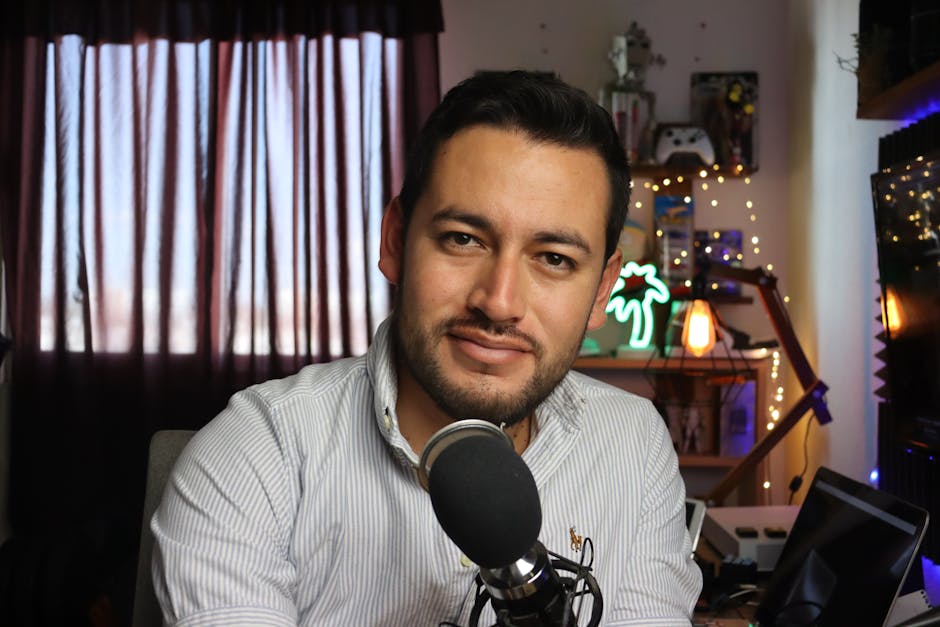The Best Practices for Crafting Compelling Podcast Titles and Descriptions.
The Best Practices for Crafting Compelling Podcast Titles and Descriptions
In the vast, ever-expanding universe of audio content, standing out isn’t just a goal—it’s a necessity. Your podcast’s title and description are far more than mere labels; they are your digital handshake, your elevator pitch, and your primary tools for captivating new listeners and retaining existing ones. They are the gatekeepers to your content, determining whether a potential subscriber scrolls past or clicks play. Mastering the art of crafting these crucial elements isn’t just about being creative; it’s about strategic communication, understanding listener psychology, and optimizing for discoverability in a crowded marketplace. This comprehensive guide will illuminate the pathways to creating titles and descriptions that don’t just inform, but truly compel.
Unlocking Listener Curiosity: The Art of a Magnetic Podcast Title
A podcast title is your first, and often only, chance to make an impression. It needs to be a beacon in the digital fog, drawing listeners in with clarity, intrigue, and a promise of value. Think of it as the headline of an article; it must encapsulate the essence of your episode or show while simultaneously sparking curiosity. This delicate balance is where the ‘compelling’ truly comes into play.
Hooking Attention: The Power of Clarity and Intrigue in Your Title
The most compelling titles manage to be both clear and intriguing. Clarity ensures that a potential listener immediately understands what your podcast or episode is about. Is it a true-crime deep dive? A comedy improv show? A business strategy discussion? Don’t make them guess. At the same time, intrigue is what makes them want to know more. It’s the subtle hint of a story untold, a question posed, or a unique perspective offered. For instance, instead of “Interview with a CEO,” consider “From Garage to Global: How One CEO Disrupted an Industry.” The latter is clear about the subject but adds a layer of narrative intrigue.
- Be Specific, Not Generic: Vague titles get lost. “Marketing Tips” is less effective than “5 Guerrilla Marketing Tactics for Startups.”
- Evoke Emotion or Benefit: Titles that hint at solving a problem, sparking joy, or revealing a secret perform better. “Overcoming Imposter Syndrome” or “The Secret to Effortless Productivity.”
- Mind the Length: While there’s no hard rule, shorter, punchier titles often perform better, especially on mobile devices where space is limited. Aim for conciseness without sacrificing impact. Many platforms truncate titles after a certain character count, so front-load your most important words.
Strategic Keyword Placement: Guiding Search Engines to Your Episodes
Beyond captivating humans, your title must also speak to algorithms. Search Engine Optimization (SEO) is paramount for discoverability. Podcast directories like Apple Podcasts, Spotify, and Google Podcasts use keywords in your title to help listeners find relevant content. This means strategically integrating words and phrases that your target audience is likely to search for.
- Identify Core Keywords: What terms would someone use to find your content? Use tools or simply brainstorm. If your podcast is about sustainable living, keywords might include “eco-friendly,” “zero waste,” “green living,” or “environmental tips.”
- Integrate Naturally: Don’t stuff keywords. They should flow organically and make sense. A title like “Eco-Friendly Living: Your Guide to Zero Waste & Green Habits” works better than “Eco-Friendly Zero Waste Green Living Environmental Tips Podcast.”
- Focus on the Primary Keyword First: Place your most important keywords closer to the beginning of your title, as this often carries more weight with search engines and is visible even if the title is truncated.
Branding Your Audio: Consistency and Recognition in Title Design
Your podcast title is a core part of your brand identity. Consistency in naming conventions, especially for episode titles within a series, builds recognition and helps listeners navigate your content. If you have a specific format, like “The [Your Show Name] Interview Series: [Guest Name],” stick to it. This creates a predictable and professional experience, reinforcing your brand with every new release.
- Consider a Series Name: If your show is evergreen, a consistent series name (e.g., “Deep Dive with [Host Name]”) can be part of your episode titles.
- Maintain Tone: Does your podcast have a humorous, serious, educational, or inspiring tone? Your titles should reflect this to attract the right audience.
- Avoid Special Characters (Mostly): While emojis can sometimes add flair, use them sparingly and thoughtfully. Overuse can make your title look unprofessional or hinder searchability on some platforms. Stick to standard characters for maximum compatibility.
Beyond Keywords: Architecting Irresistible Podcast Descriptions
If your title is the hook, your description is the reel. It’s where you expand on the promise of your title, provide essential details, and convince a potential listener that their time will be well spent. A compelling description doesn’t just summarize; it sells, informs, and connects. It’s your opportunity to tell a mini-story, set expectations, and guide the listener towards hitting that play button.

Painting a Picture: Summarizing Value and Setting Expectations
Your description needs to offer more than just a bland summary. It should paint a vivid picture of what a listener will gain from tuning in. What problems will you solve? What questions will you answer? What unique insights will you provide? Start with a strong opening sentence that immediately conveys value or poses an intriguing question. Then, elaborate on the content, highlighting key takeaways or discussion points without giving away all the surprises.
- Lead with the Hook: Your first 1-2 sentences are crucial, especially as many platforms truncate descriptions. Make them count!
- Detail Key Discussion Points: Use bullet points or short paragraphs to break down what listeners will learn or hear about. This makes the description scannable and highlights specific value.
- Know Your Audience: Tailor the language and level of detail to your target listener. Are they beginners, experts, or somewhere in between?
The SEO Powerhouse: Weaving Keywords Naturally into Your Summary
Just like titles, descriptions are fertile ground for SEO. Podcast platforms crawl these descriptions for keywords, helping to categorize and recommend your content. This means you should thoughtfully integrate your identified keywords throughout the description, but always prioritize readability and natural language.
- Expand on Title Keywords: Use your primary title keywords and related long-tail keywords (more specific phrases) in your description. If your title is “Sustainable Living,” your description might include phrases like “eco-friendly home,” “zero-waste kitchen,” “reducing carbon footprint,” and “ethical consumption.”
- Use Synonyms and Related Terms: Don’t repeat the exact same keyword endlessly. Google and other search engines are sophisticated enough to understand synonyms and semantically related terms. This also makes your description more engaging to read.
- Think Like Your Audience: What specific questions might they type into a search bar that your episode answers? Frame parts of your description around those potential queries.
Guiding the Listener: Crafting Effective Calls to Action
A compelling description isn’t complete without a clear call to action (CTA). What do you want your listener to do after reading it? Do you want them to subscribe, visit your website, follow you on social media, or leave a review? Be explicit and make it easy for them to take the next step.
- Subscribe and Follow: Always encourage listeners to subscribe to your podcast. This is the most crucial action for growth.
- Visit Your Website/Social Media: Include relevant links to your website, show notes page, or social media profiles. Ensure these links are clickable where possible, though some podcast platforms might strip direct links. Provide the full URL.
- Engage Further: Ask listeners to leave a review, share the episode, or join a community discussion.
- Placement Matters: Place your most important CTA towards the end of the description, after you’ve delivered the value proposition.
For more detailed insights on growing your audience, consider exploring our guide on How to Grow Your Podcast Audience.
The Symbiotic Relationship: How Titles and Descriptions Elevate Each Other
While titles and descriptions serve distinct purposes, their true power emerges when they work in harmony. They are two sides of the same coin, each enhancing the other’s effectiveness. A great title combined with a weak description is a missed opportunity, just as a brilliant description can be overlooked if the title fails to grab attention. The synergy between them creates a robust, irresistible package for your podcast.
Creating a Cohesive Narrative: Title as Teaser, Description as Deep Dive
Think of your title as the intriguing movie poster and your description as the compelling trailer. The poster (title) gives you a quick, impactful glimpse, while the trailer (description) expands on the plot, introduces characters, and builds excitement. They should tell a cohesive, escalating story. The title promises; the description delivers on that promise and then




Post Comment